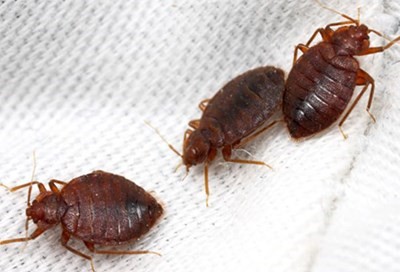
Bed bugs are one of the most dreaded pests for home owners and property managers, and the number of infestations seems to grow every year. Despite this, there are still several myths concerning bed bugs that we frequently encounter. Not knowing the difference between fact and fiction can be an expensive and uncomfortable mistake, so make sure to read up on these common misconceptions about bed bugs!
| MYTH: Bed bugs are a result of unsanitary conditions in the home or apartment.
FACT: Bed bug infestations have nothing to do with the cleanliness of the home or the people living there. While cleaning up excessive clutter and frequent vacuuming can prevent largescale infestations, the truth is that bed bugs don’t discriminate. Infestations can happen anywhere. |
| MYTH: The only way I can tell if I have bed bugs is if I am bitten; they’re too small for me to see.
FACT: Regularly inspecting your room is a good way to avoid a full-blown infestation, because adults, nymphs, and eggs are all visible to the naked eye. Adult bed bugs are about the size, shape, and color of an apple seed. They are oval shaped, flat, and about 1/4 inch in length. Nymphs are translucent and are about the size of a pinhead. Eggs are the size, shape, and color of a half grain of rice. Additionally, most people don’t actually show signs of bites, and for those who exhibit symptoms it can take two to four weeks for them to appear. |
| MYTH: Bed bugs only come out in the dark, sleeping with the light on will prevent me from getting bitten.
FACT: Bed bugs activity level has nothing to do with the amount of light in a room. Instead, bed bugs adapt their activity level to the schedule of the host to amplify their feeding time. For example, the bed bugs present in someone’s home who works third shift will be active during the day and inactive at night, while the opposite would be true for someone who works first shift. |
| MYTH: Bed bugs only live on beds, throwing out my bed will get rid of the problem.
FACT: Their name is a bit deceiving, as bed bugs live and hide in a wide variety of places besides mattresses and linens. These places include spaces behind wood trim, inside electrical boxes, in floors, and behind wallpaper. A new bed would likely be re-infested within a day. In fact, a major cause of the spread of bed bugs is the movement of infested furniture without a heavy gauge plastic encasement, and bed bugs frequently re-infest buildings through tenants bringing in used furniture that had been thrown out. |
| MYTH: Once I have bed bugs, I might as well throw out all of my furniture and belongings.
FACT: Almost everything can be salvaged. Most furniture and clothing can be treated. |
| MYTH: Bed bugs spread diseases.
FACT: While they are a huge nuisance, causing itchiness, irritation, and a loss of sleep, bed bugs are not known to spread disease. Because bed bugs feed on blood, there’s a common belief they can transmit disease just like mosquitoes and ticks can. This partially stems from the belief mosquitoes and ticks can inject blood from other victims into new victims. But that’s not how it works. In fact, a mosquito can get the malaria parasite in their system from feeding on someone who has the virus, but the virus lives in the mosquito’s saliva. When the mosquito injects the anti-coagulant to feed on the blood, the saliva itself transmits the disease. Bed bugs tend to have a very confined area in which they feed. They don’t have wings, so they don’t fly all over the neighborhood feasting on other people and risking catching a virus or disease. Thus, bed bugs are not known to transmit diseases like other blood-sucking insects. The biggest problem they inflict upon people is psychological in nature. Being feasted upon at night is something that disturbs most people and can cause loss of sleep. All that being said, scratching bed bug bites does increase the possibility of putting bacteria from dirty fingernails into the wound, but the risk is minimal. |
| MYTH: If I am being bitten in my bed, sleeping in a different room of my house will offer some relief or will leave the bed bugs without a food source.
FACT: Bed bugs will follow their food source, and this would just result in spreading the infestation to more rooms of your home, making treatment more difficult. They are likely living or hiding in belongings that you would take to the new room as well, or they can migrate on their own. Alternatively, bed bugs can go into a dormant state and live up to nine months without feeding, only to reemerge when you reenter the room. |
| MYTH: I can take care of the problem with over the counter products.
FACT: We strongly recommend not using a DIY treatment. Nearly 90% of bed bugs are genetically resistant to common household insecticides. Only professionals can access the products and training necessary to control bed bugs, and an over-the-counter insecticide could cause the bed bugs to disperse to multiple rooms, making effective treatment more difficult. |
| MYTH: Once I’ve gotten the infestation treated, I’m in the clear.
FACT: Bed bugs can re-infest a building just like the original infestation. You still need to remain vigilant and frequently inspect critical areas. As with other pest issues, it is extremely beneficial to be as proactive as possible and contact a pest control professional as soon as possible. |
Need a pest control estimate?
We'll call you! Our representatives are fast and friendly.
Bed Bug Myths and Facts – The Truth About What You Should Know in Wisconsin
Serving Wisconsin





